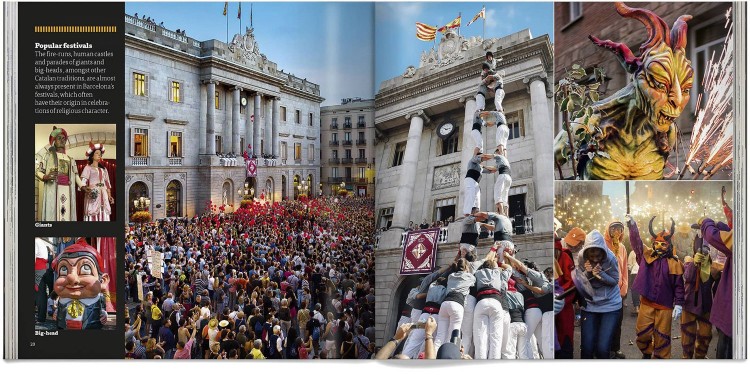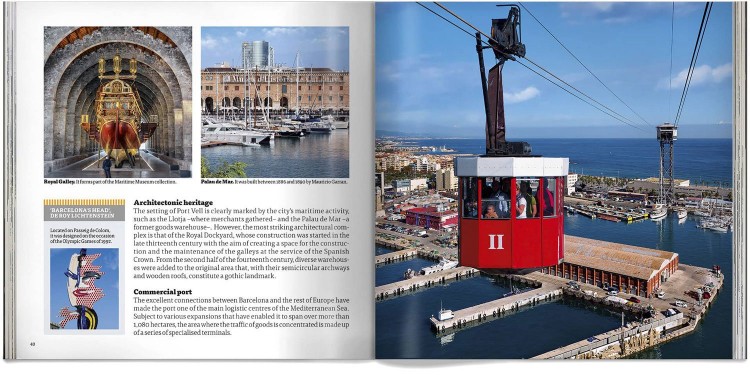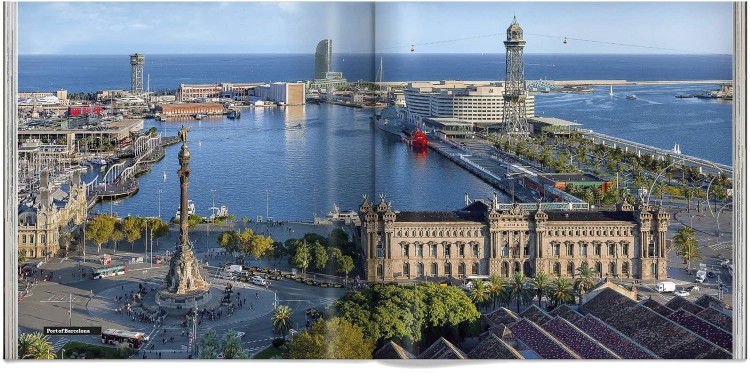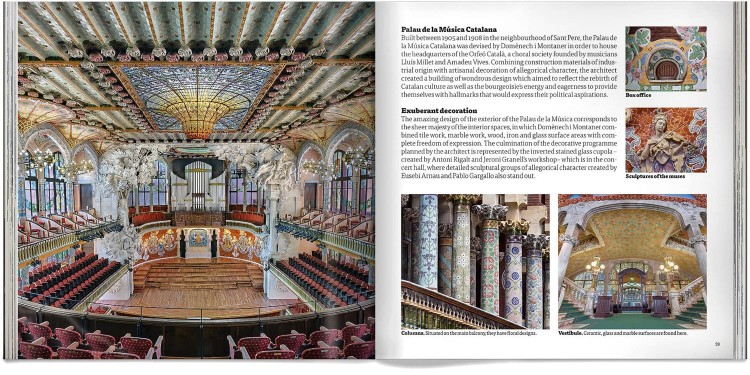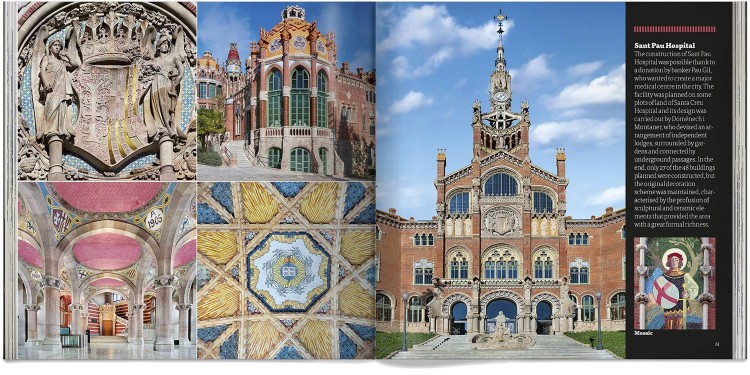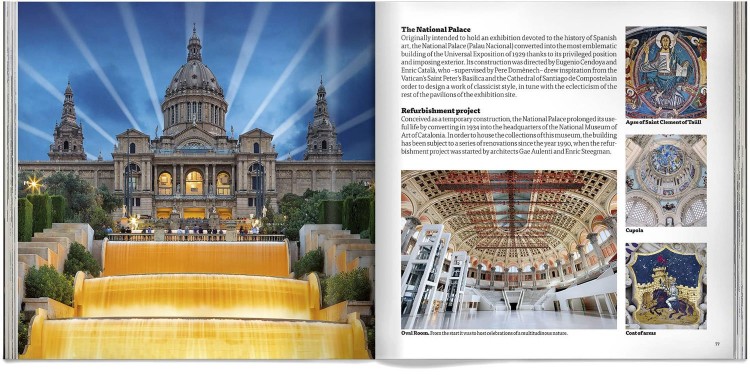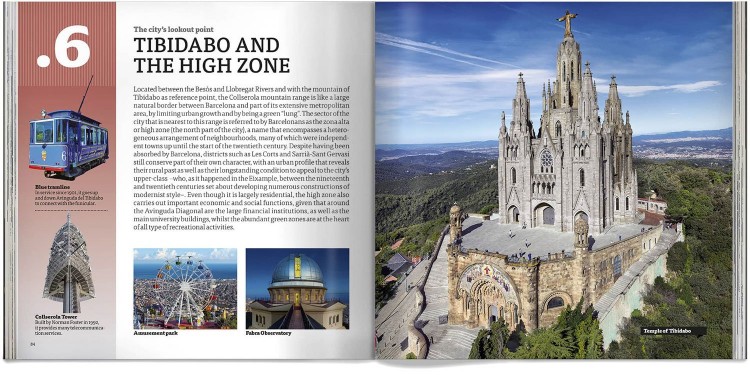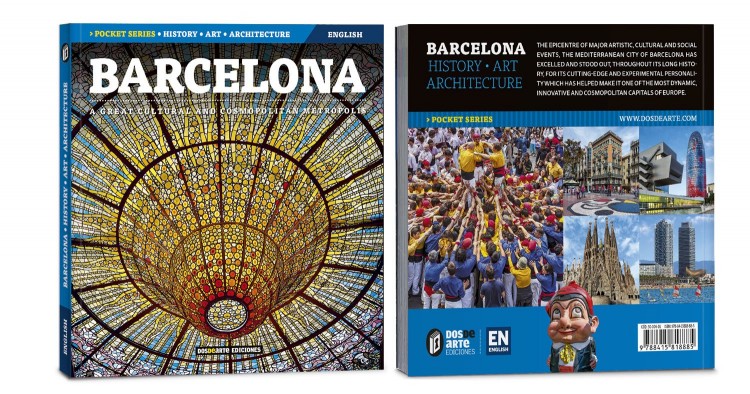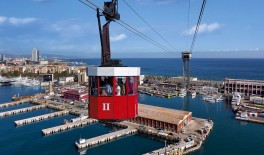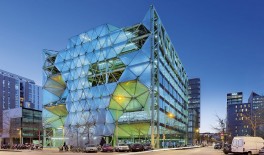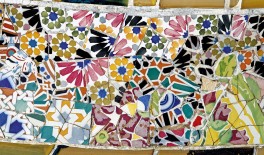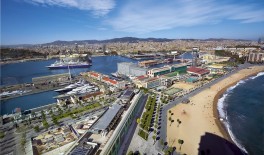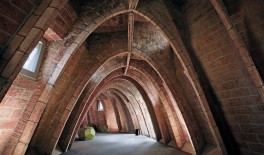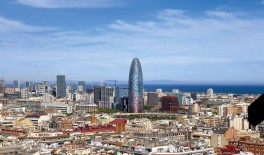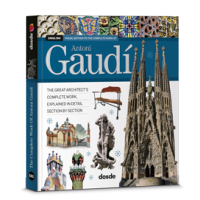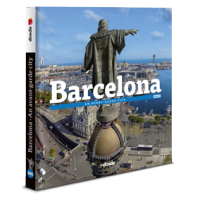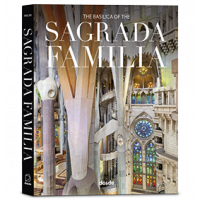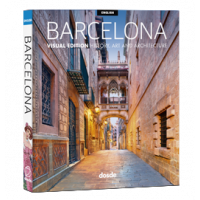Barcelona
A great cultural and cosmopolitan metropolis
RETURN
About the book Barcelona
The destination of millions of visitors, Barcelona is a city known throughout the world for its avant-garde and innovative character, which has allowed it to become one of the most dynamic cities in Europe, as well as one of the major capitals of the Mediterranean.
Since its foundation in Roman times, Barcelona has been the melting pot of countless writers, poets, artists and architects that have left behind a legacy of incalculable value. The different cultural and social movements that have developed in the city throughout the centuries have resulted in an urban layout of heterogeneous appearance, comprised of a great variety of iconic buildings and monuments.
This paperback shows us the different areas of Barcelona, showing its most emblematic spaces and providing the most relevant information about the origins and the evolution of a unique city, which has witnessed major historical events.
Since its foundation in Roman times, Barcelona has been the melting pot of countless writers, poets, artists and architects that have left behind a legacy of incalculable value. The different cultural and social movements that have developed in the city throughout the centuries have resulted in an urban layout of heterogeneous appearance, comprised of a great variety of iconic buildings and monuments.
This paperback shows us the different areas of Barcelona, showing its most emblematic spaces and providing the most relevant information about the origins and the evolution of a unique city, which has witnessed major historical events.
Pocket Edition
Barcelona
It includes exclusive digital content
Made with environmentally friendly paper
Multilanguage: Available in 8 languages
More than 220 pictures and detailed info
About the book Barcelona
The destination of millions of visitors, Barcelona is a city known throughout the world for its avant-garde and innovative character, which has allowed it to become one of the most dynamic cities in Europe, as well as one of the major capitals of the Mediterranean.
Since its foundation in Roman times, Barcelona has been the melting pot of countless writers, poets, artists and architects that have left behind a legacy of incalculable value. The different cultural and social movements that have developed in the city throughout the centuries have resulted in an urban layout of heterogeneous appearance, comprised of a great variety of iconic buildings and monuments.
This paperback shows us the different areas of Barcelona, showing its most emblematic spaces and providing the most relevant information about the origins and the evolution of a unique city, which has witnessed major historical events.
Since its foundation in Roman times, Barcelona has been the melting pot of countless writers, poets, artists and architects that have left behind a legacy of incalculable value. The different cultural and social movements that have developed in the city throughout the centuries have resulted in an urban layout of heterogeneous appearance, comprised of a great variety of iconic buildings and monuments.
This paperback shows us the different areas of Barcelona, showing its most emblematic spaces and providing the most relevant information about the origins and the evolution of a unique city, which has witnessed major historical events.
No reviews yet.
Additional Information
- Additional Information
- Subtitle: A great cultural and cosmopolitan metropolis
- Weight (g): 290
- Binding: Paperback with flaps
- Size (cm): 17,5 x 19,5
- Author: Dosde
- Pages: 0
- Edition: Pocket Edition
What to visit in Barcelona
Barcelona is a city of contrasts, in which historical buildings coexist with more modern constructions. The history of Barcelona is reflected in its artistic and cultural heritage, which attracts millions of visitors every year.
However, the presence of its medieval walls and port facilities meant that its citizens were unable to make the most of the coastline. With the celebration of the Olympic Games in 1992 Barcelona no longer turned its back on the sea and underwent major urban developments that supposed the integration of the coastline into city life.
The later regeneration of the beaches and the construction of facilities such as Puerto Olímpico and the Maremagnum complex, has transformed the coastline into a highly valued space for public use and also constitutes the entrance way to the city for millions of visitors.
Modernist architecture became one of the main signs of social status for the Bourgeoisie, which backed the construction of large projects. Architects such as Antoni Gaudí, Josep Puig i Cadafalch, Lluís Domènech i Montaner and Enric Sagnier, amongst others, let free rein to their imagination in order to design facilities and residential buildings that, apart from radically altering the appearance of the urban landscape, became the identifying features of the more creative Barcelona.
The historical centre
The historical centre plays host to a hive of commercial and cultural activity which harks back to its former medieval days. Comprised of a complex network of narrow streets, the Gothic Quarter is where the majority of the important historical buildings of the Old City are concentrated and ever since Roman times this neighbourhood has been the epicentre of the city's religious and civil power. The Plaza del Rey, Barcelona Cathedral or the Basilica of Santa María del Pi are amongst some of the most important sites to visit.The maritime city
Barcelona has been linked to the sea since the arrival of the Romans, who incorporated it into their great Mediterranean trade network; although its consolidation as a great overseas power came with the constitution of the Crown of Aragon.However, the presence of its medieval walls and port facilities meant that its citizens were unable to make the most of the coastline. With the celebration of the Olympic Games in 1992 Barcelona no longer turned its back on the sea and underwent major urban developments that supposed the integration of the coastline into city life.
The later regeneration of the beaches and the construction of facilities such as Puerto Olímpico and the Maremagnum complex, has transformed the coastline into a highly valued space for public use and also constitutes the entrance way to the city for millions of visitors.
Modernist Barcelona
The artistic genre of Modernisme, emerging between the late nineteenth century and the early twentieth century was warmly received in Barcelona.Modernist architecture became one of the main signs of social status for the Bourgeoisie, which backed the construction of large projects. Architects such as Antoni Gaudí, Josep Puig i Cadafalch, Lluís Domènech i Montaner and Enric Sagnier, amongst others, let free rein to their imagination in order to design facilities and residential buildings that, apart from radically altering the appearance of the urban landscape, became the identifying features of the more creative Barcelona.

